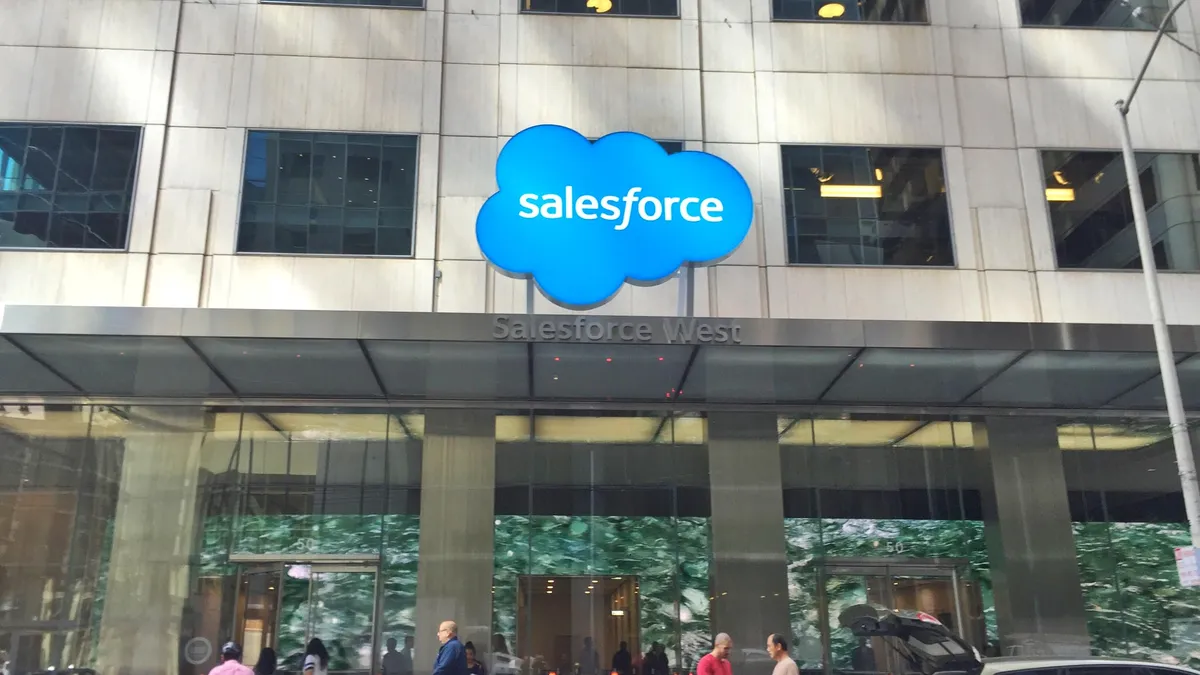When you have thousands of data points, applications, users and networks, how do you make sense of it all?
This is a question more CIOs and technology leaders are being faced with. Advanced analytics tools like artificial intelligence help — or at least try to — make sense of all the information, but before it all takes place something else has to happen: Integrating disparate parts of IT and collecting the necessary data.
Salesforce recently announced the acquisition of MuleSoft, an integration software company for enterprise application networks. The deal will have rippling impacts in the API economy, which is expanding as integration becomes a greater priority for companies looking to connect data, applications and networks.
The deal has the potential to push integration solutions to the forefront of tech leaders' minds and increase market competition, but will it be enough to keep the CRM company on its ambitious path forward?
Integration maturation
The importance of integration in enterprise software is increasingly evident, and CIOs need to figure out what solution they need and how to implement it.
But with businesses operating in different stages of digital transformation, on different platforms (the cloud, a hybrid or on prem model) and with multiple service providers, this can be a herculean challenge. Acquiring and onboarding an integration solution is not out of character for a major tech company, and the MuleSoft deal is big for the integration and enterprise software spaces as well as Salesforce's bottom line.
"We think it's all good," said Murray Rode, CEO of TIBCO. "It makes the space more prominent, and I think it's going to have more companies thinking and talking about whether their customers and partners are thinking and talking about this kind of technology."
As Salesforce reaches its tentacles out into the market and pulls new capabilities "back into the mothership," other companies will be watching and playing catch-up, said Simon Peel, CSO of Jitterbit. CIOs and leaders at companies like SAP, Oracle, Amazon Web Services, Google and Microsoft, among others, will look at Salesforce's example and turn their eyes internally, asking if they have an integration tool like MuleSoft.
If the answer to that question is no, they will have to build their own or go out to market to get one. Or, if they have one but Salesforce's is better, they may have to turn to the CRM giant.
Either way, "Salesforce is laying down the gauntlet," said Peel, and the ultimate winner of this race will be whoever offers up the best ability to integrate.
For MuleSoft specifically, the deal will certainly impact its neutrality in the market and may narrow its focus around CRM and Salesforce over a more horizontal connectivity market, said Rode.
A Salesforce to be reckoned with
CEO Marc Benioff has lofty ambitions for his company, including a $20 billion valuation by FY2022 and $40 billion by 2028. And he hasn't grown the company to where it is now by waiting for opportunities to come to him.
Salesforce has spent heavily on sales and marketing as well as acquisitions, keeping operating profits low and shareholder tension high. Some ambitious investments never panned out, like LinkedIn and Twitter, but others have paid off. The company's $33 million MetaMind acquisition was the basis for the creation of the company's Einstein AI platform, which now drives one billion customer insights daily.
Although the price tag on the MuleSoft deal drew many eyes Tuesday as Salesforce agreed to pay well over MuleSoft's Monday closing price, it's a strategic move for Salesforce and the zeroes after the dollar sign reflect that.
MuleSoft posted strong growth over the last few years and it went public just one year ago. The integration company made a fair amount of business from Salesforce and Salesforce referrals, so on one hand Salesforce is buying back millions in revenue that would have been going to the integration company anyway, said Peel.
The addition of MuleSoft software will reduce friction for new Salesforce customers and open doors in IT infrastructure that were previously closed off to integration. By increasing the breadth and depth of customer integration on its network and cloud, Salesforce can drive customer loyalty on its platform.
For competitors like SAP, this can mean stiffer competition down the line.
Salesforce does not offer an integration platform today, so the deal is additive to its integration capabilities, making it easier for customers to establish and maintain connections, according to Rode. MuleSoft is often incorrectly characterized as a cloud company, when in reality it has a heavy on-premise footprint, which is somewhat at odds with Salesforce's cloud-heavy model.
As a cloud-native company, it will be more difficult for Salesforce to work with on premise solutions than it would be for a company like IBM, which has decades of experience in the on prem world, said Peel. But Salesforce needs to ride out the mismatch between on premise and cloud models.
After all, a hybrid technology architecture will be relevant for most businesses and it can find success in the mid-market where companies don't have the infrastructure or integration tools available that they need.




















